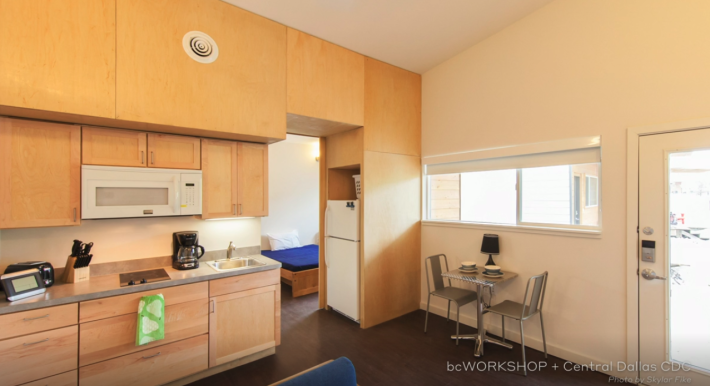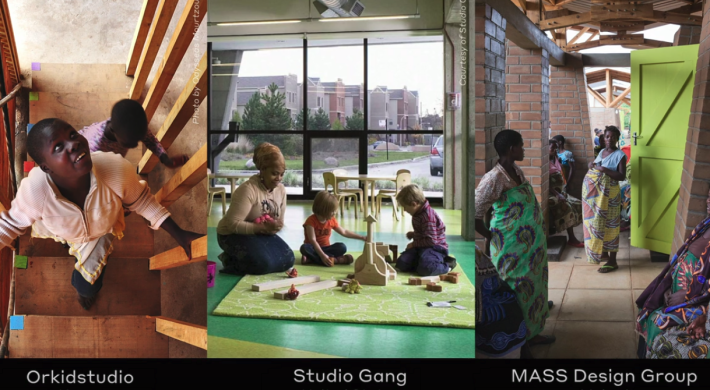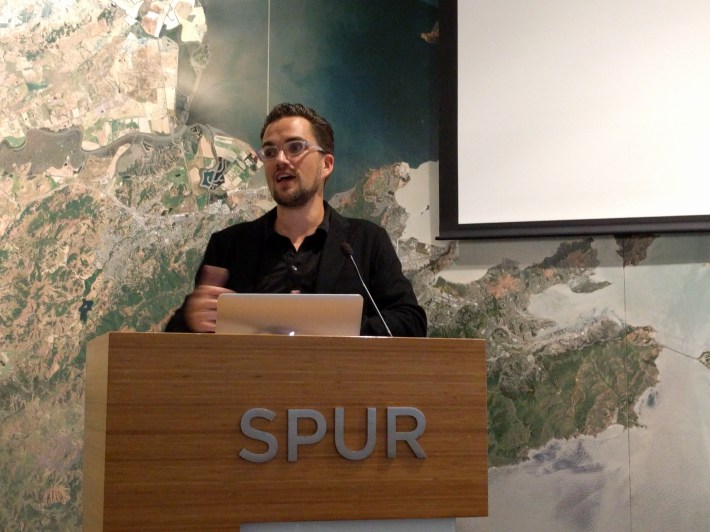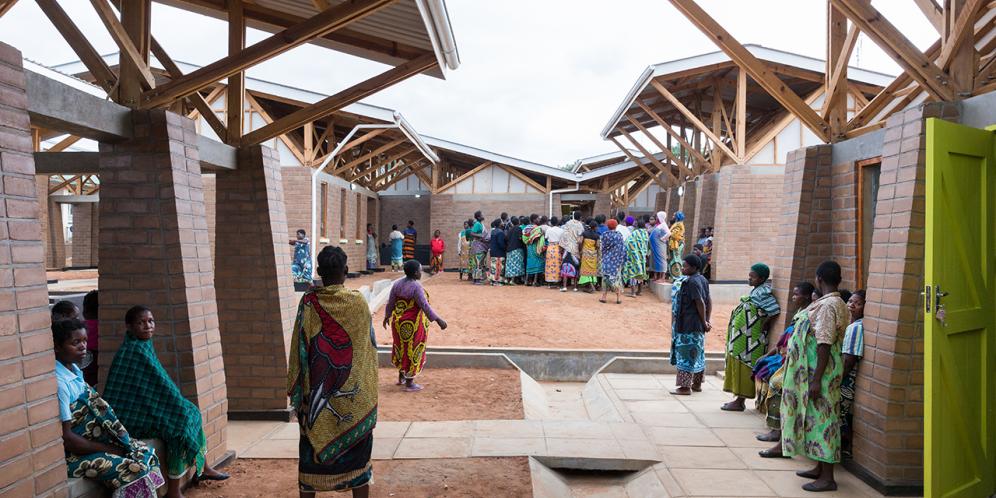Note: Metropolitan Shuttle, a leader in bus shuttle rentals, regularly sponsors coverage on Streetsblog San Francisco and Streetsblog Los Angeles. Unless noted in the story, Metropolitan Shuttle is not consulted for the content or editorial direction of the sponsored content.
Tuff Sheds are made for storing power tools and lawn mowers, said John Cary, author of Design for Good, during a talk today at SPUR's Urban Center in San Francisco. "These were not designed for human habitation."
But the City of Oakland is using Tuff Sheds, ordered via Home Depot, scattered behind chain-link fences near a freeway over pass, as transitional housing for the homeless. "Think about the messages that we send people right here in the Bay Area," he said.
Cary argues that it isn't necessarily about costs, and points out that providing a basic level of human dignity in design, by providing windows, space, and security, can improve outcomes in everything from hospitals to homeless shelters. He contrasts the Tuff Sheds of Oakland with the Cottages at Hickory Crossing, a homeless facility in Dallas. It provided access to social services and offered transitional housing that was "dignified, for the most chronically homeless people."

The units even came with toothbrushes and toothpaste, a crock pot, and a fridge. Cary recalled asking a chronically homeless person what the key to the unit meant for him, and he said it was like heaven and represented the security he'd been searching for for three decades. "The result was all of the 50 people who entered this facility transitioned out of it."
And Cary argues that the money Oakland is saving will be for naught if homeless people end up back on the streets.

Architecture and design, said Cary, has to start with the dignity and needs of the people who will use the structures. He recalled the birth of his first daughter. His wife was put in a room at an Oakland hospital that was beige, antiseptic, with no windows, a bunch of machines beeping inexplicably, and a clock directly over the door. "I've never given birth, but I know the last thing a woman in childbirth would ever want to see is a clock ticking the seconds by," he said.
A nurse came in and said she wished she had been an architect, so she could have designed a better room. But the room, pointed out Cary, was designed by an architect.

"Buildings are about people, and people are about stories," said Cary. He argued that architects and designers, whether they're designing hospitals, or transitional housing, or public transit, have to talk to the people who will use the structures. He pointed out that if you read a book about architecture, you "hear about designers and their good intentions, but you rarely hear from clients--and never from end users."
In other words, don't build a maternity ward that screams, "this is a hospital!" Instead, have windows--have common spaces where other mothers can meet and talk and maybe even get some fresh air or enjoy a breeze.

Cary has worked on projects like this in Africa. He recalls one in Malawi for a 'Maternity Waiting Home.' The president of that East African nation was concerned about the high rate of women dying in childbirth. So she set out to construct maternity centers to provide a safe and secure place to give birth. The original designs were sterile, plain brick structures with small windows and virtually no natural ventilation. But Cary brought together architects and designers with the women who were actually getting ready to give birth, plus local workers, and found out what they could build with local materials, within budget. But most importantly, he asked the women what they wanted in a facility. The architects and builders came up with designs like the lead image, with open corridors, lots of natural light, and places for women to get together and have a sense of community at a very special but potentially dangerous time.
"It’s yet another proof that we can, for the same original cost, create better designs by working directly with the local community that’s going to benefit from it," he said.
Meanwhile, one of the architects who worked on the project was American. She was pregnant and had to go back to the U.S. to give birth. While there, she gave birth in a typically sterile maternity room of a local hospital. Cary recalled that, as with his wife, the woman "found herself in a room, where she was isolated, no idea if it was sunny out, in contrast to the deeply communal experience that these women are having in Malawi."
Cary said that designers of hospitals, housing, transit, etc. have to do better. "Once you see what design can do, you can’t undo it, once you’ve experienced dignity, you can’t accept anything less," he said.

For more on John Cary and his views on architecture and the built environment, check out his TED talk. Or read his book.
For more events like these, visit SPUR’s events page.





